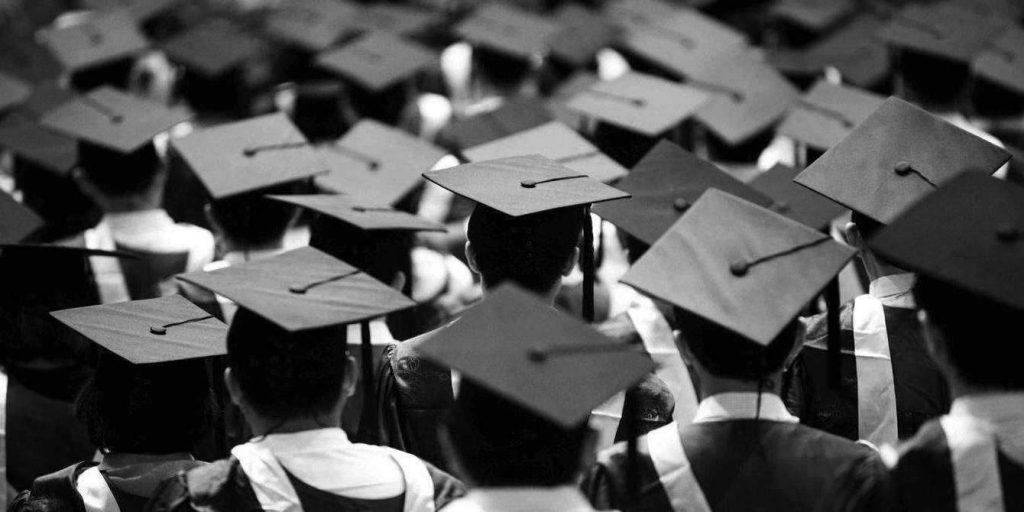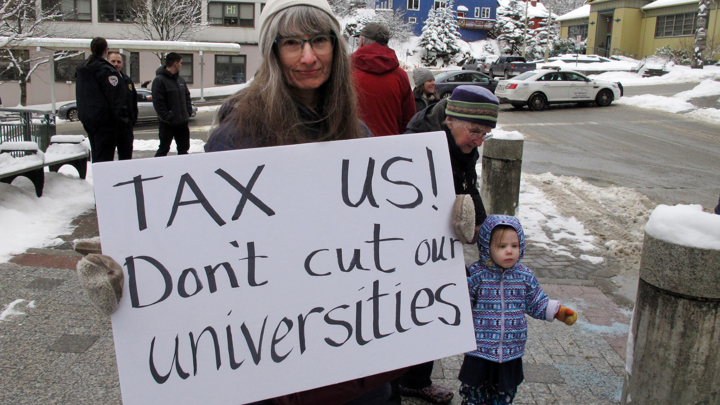My dad never went to college. He graduated from high school in 1930 when unemployment rates were on the way to 15% and eventually reached 25%. He needed – and wanted a job – so he never seriously thought about taking the time to get more education. I believe he regretted that decision for the rest of his life.
It was the same for my mother, a high school graduate who ended up working in the administrative office of a small state college in Nebraska. She had all the skills needed in those days to be a secretary. She could type, take shorthand and knew how to format a business letter, but I’ve always suspected she longed for more. For many in her generation, particularly women, more was just not an option.
Both my parents were avid readers and our home was filled with books and magazines and newspapers, but no degrees. They valued what they never had an opportunity to achieve and there was never a doubt that my brother and I would go to college. It would be a financial struggle to some degree, but tuition at a state college in those days was remarkably affordable and besides my parents – children of the Great Depression – accepted it as an article of faith that a college education was a stepping stone on a path to a better, more financially secure life.

Yet, opinions about the value of higher education divide Americans like most everything else divides us. The Pew Research Center reported recently that, “over the past two years, the share of Republicans and Republican leaners who view the impact of colleges and universities positively has declined 18 percentage points (from 54% to 36%), and this shift in opinion has occurred across most demographic and ideological groups within the GOP.”
Views on the part of Democrats about the positive role of colleges and universities are almost the reverse of those held by Republicans, with wide majorities of Democrats saying, “colleges have a positive effect on the way things are going in the country.”
It’s no coincidence that the Republican Party “base,” the die hard supporters of the current president, are dominated by non-college educated voters who apparently broadly subscribe to the notion that higher education is dominated by “elites” peddling dangerous ideas. It’s also no coincidence that Republican elected officials from coast-to-coast are increasingly critical of higher education.
Alaska’s Republican governor, a Donald Trump favorite, recently proposed an immediate $130 million, 40% reduction in state support for the Alaska university system. Public outrage and the real threat that such drastic action would decimate the University of Alaska prompted a pull back. The university system now has three years to absorb a $70 million haircut.

Two years ago the attorney general of Arizona sued the state’s university system because tuition was too high, but of course failed to acknowledge that the GOP dominated state legislature has wacked higher education funding by more than 40% over the last decade.
According to the Center for Budget and Policy Priorities, “Overall state funding for public two- and four-year colleges in the school year ending in 2018 was more than $7 billion below its 2008 level, after adjusting for inflation.”
In eight states – Alabama, Arizona, Illinois, Louisiana, New Mexico, Oklahoma, Pennsylvania, and South Carolina – per-student funding declined by more than 30 percent over ten years. Still, state funding and how it has impacted tuition and fees is just a part of the higher education story.
In Idaho, of course, some Republican lawmakers want to wage a culture war over diversity programs on Idaho campuses and critiques from the political right often involve the accusation that liberals dominate college and university classrooms and administration.
While my own college experience is mighty dated, I’m confident the culture war aspects of modern higher education are vastly overblown. My most memorable college instruction was a rumpled old prof who made me grapple with the causes and effects of the American Civil War. He didn’t have a political agenda. He was a teacher. I still have the textbook he used. I know dozens if not hundreds of teachers and administrators in higher education and to a person their motives are education, not indoctrination.
The new leaders who are now in place at all of Idaho’s public colleges and universities face daunting challenges, including raising tuition costs that can be tied directly to decreased state support. But no issue is more important than impressing upon law and policy makers that higher education is vital to personal and societal success. College presidents can no longer, if they ever could, be content to assume, as my parents did, that everyone gets the message about how important higher education is and will be in the future.
Amid the culture wars and partisan divides it’s worth focusing on the cold hard fact that the current and future American economy demands more education for more Americans. Not everyone needs or wants a four year degree, of course, and community colleges and skills training of all kinds must be a critical part of producing a talented workforce. A still too little tapped role for colleges and universities are robust partnerships with workforce and skills training program. Policy makers need to find the resources to make that work.
Yet with evidence showing that the higher educational achievement in the United States has now been overtaken by some of our principal economic competitors, including South Korea (where 70% of young people earn a college degree), as well as Canada and Japan. In fact, the U.S. ranks eleventh among 35 developed nations in college attainment according to a new study by the American Enterprise Institute.
Like so much that divides Americans, the “is college worth it” gap that has Republicans challenging higher education’s value is based more on ideology than facts. At its core a valuable and valued higher education produces critical thinkers, able to reason a way though problems and opportunities by applying learned knowledge. Never have we needed that kind of education more.
